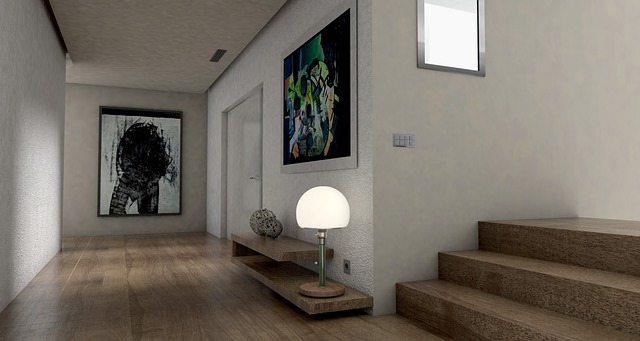Managing Transition Zones: Harmonizing Adjacent Spaces
Transition zones such as hallways, thresholds, and open-plan junctions influence how connected adjacent interior areas feel. Thoughtful choices in palette, undertones, swatches, and finishes can create visual continuity while preserving the distinct function of each room.

Managing transition zones effectively helps interiors feel intentional rather than disjointed. Begin by mapping sightlines, natural light patterns, and the dominant surfaces in each room—floors, trim, and large furniture pieces—to guide choices of palette and finishes. Think in terms of relationships rather than exact matches: coordinated hues and consistent sheens can unite spaces while small shifts in shade or tint preserve individual character. Use swatches and temporary samples to validate decisions in real conditions before committing to a full application.
Palette: how to select cohesive colors
A cohesive palette for adjacent interior spaces typically relies on a limited set of related colors. Choose a primary neutral to act as an anchor across rooms, a secondary color to add personality, and one or two accent hues for focal points. Consider the overall mood you want—calm, energetic, or formal—and select pigments that support it. When arranging swatches, place them where different rooms meet so you can judge how the palette reads from both sides of a threshold. Recording combinations on a single board helps maintain consistency when purchasing paint and finishes.
Hues and shades: how to balance contrast
Hues give identity to a color while shades and tints control contrast and depth. For smooth transitions, select hues that sit near each other on the color wheel or share a neutral undertone. Use lighter tints in smaller or darker rooms to brighten them and deeper shades in larger spaces for intimacy. Aim for gradual changes in value and saturation across thresholds; abrupt shifts can feel jarring. Thoughtful contrast highlights architectural features and guides movement without breaking the visual flow between rooms.
Swatches and undertones: how to test combinations
Swatches are essential tools because undertones can change how a color reads next to other surfaces or in varied lighting. Tape multiple swatches on the wall at different heights and observe them under morning, midday, and evening light. Compare how the same swatch looks beside wood floors, metal finishes, and textiles to detect subtle blue, green, or yellow biases. When adjacent colors share a compatible undertone, they tend to sit together harmoniously; mismatched undertones often create unwanted tension at transition points.
Finishes and sheen: coordinating surface effects
Finishes and sheen influence both appearance and durability. Matte and eggshell sheens diffuse light and help hide imperfections, making them useful for walls that flow between spaces. Satin or semi-gloss finishes on trim and doors offer easy cleaning and a complementary reflective contrast. Keep sheen levels consistent for similar elements across rooms—matching trim sheen, for example—to reinforce cohesion. Vary finishes intentionally for function, such as higher-sheen paints in high-traffic corridors, while maintaining a coordinated overall effect.
Tinting, mixing, and pigments: ensuring color consistency
Consistency in tinting and mixing is crucial when colors are meant to relate across rooms. Use the same paint line and supplier for related colors to avoid variation in pigment formulas. Keep records of paint codes, batch numbers, and mixing instructions; reorder the same formula when additions are needed. For complex color matching, consult with the supplier about pigment load and tinting limits. Small differences in pigment concentration can shift perception at thresholds, so testing full coats on wall panels helps verify true appearance.
Primers and interior preparation: ready surfaces for transition zones
Proper priming and surface preparation ensure even color application and accurate final results. Primers unify substrate absorbency, reduce the number of topcoats needed, and can be tinted to approximate the final color, improving coverage. Address repairs, sanding, and cleaning before painting so finishes apply uniformly from one room to the next. In areas with high contact—entryways and hallways—choose primers and topcoats formulated for durability and stain resistance to keep transition zones looking consistent over time.
A deliberate approach to managing transition zones combines practical testing with careful selection of palette, hues, swatches, undertones, finishes, sheen, tinting practices, and primers. By coordinating these elements, adjacent interior spaces can feel connected yet distinct, creating a cohesive home that supports each room’s function and visual identity.





